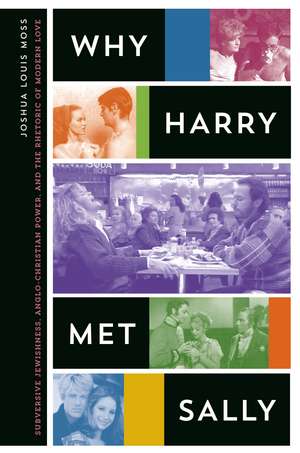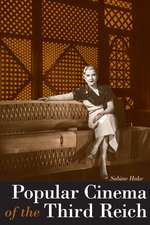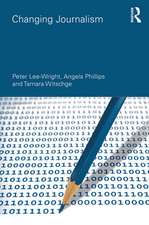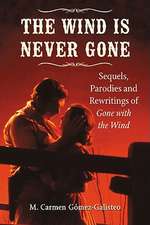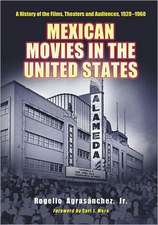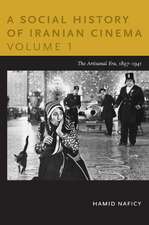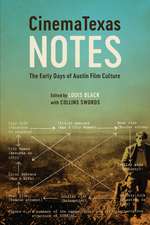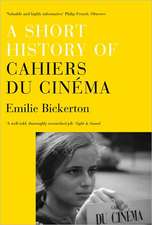Why Harry Met Sally: Subversive Jewishness, Anglo-Christian Power, and the Rhetoric of Modern Love
Autor Joshua Louis Mossen Limba Engleză Paperback – 18 iul 2017
From immigrant ghetto love stories such as The Cohens and the Kellys (1926), through romantic comedies including Meet the Parents (2000) and Knocked Up (2007), to television series such as Transparent (2014–), Jewish-Christian couplings have been a staple of popular culture for over a century. In these pairings, Joshua Louis Moss argues, the unruly screen Jew is the privileged representative of progressivism, secular modernism, and the cosmopolitan sensibilities of the mass-media age. But his/her unruliness is nearly always contained through romantic union with the Anglo-Christian partner. This Jewish-Christian meta-narrative has recurred time and again as one of the most powerful and enduring, although unrecognized, mass-culture fantasies.
Using the innovative framework of coupling theory, Why Harry Met Sally surveys three major waves of Jewish-Christian couplings in popular American literature, theater, film, and television. Moss explores how first-wave European and American creators in the early twentieth century used such couplings as an extension of modernist sensibilities and the American “melting pot.” He then looks at how New Hollywood of the late 1960s revived these couplings as a sexually provocative response to the political conservatism and representational absences of postwar America. Finally, Moss identifies the third wave as emerging in television sitcoms, Broadway musicals, and “gross-out” film comedies to grapple with the impact of American economic globalism since the 1990s. He demonstrates that, whether perceived as a threat or a triumph, Jewish-Christian couplings provide a visceral, easily graspable, template for understanding the rapid transformations of an increasingly globalized world.
Using the innovative framework of coupling theory, Why Harry Met Sally surveys three major waves of Jewish-Christian couplings in popular American literature, theater, film, and television. Moss explores how first-wave European and American creators in the early twentieth century used such couplings as an extension of modernist sensibilities and the American “melting pot.” He then looks at how New Hollywood of the late 1960s revived these couplings as a sexually provocative response to the political conservatism and representational absences of postwar America. Finally, Moss identifies the third wave as emerging in television sitcoms, Broadway musicals, and “gross-out” film comedies to grapple with the impact of American economic globalism since the 1990s. He demonstrates that, whether perceived as a threat or a triumph, Jewish-Christian couplings provide a visceral, easily graspable, template for understanding the rapid transformations of an increasingly globalized world.
Preț: 244.08 lei
Nou
Puncte Express: 366
Preț estimativ în valută:
46.73€ • 48.75$ • 39.17£
46.73€ • 48.75$ • 39.17£
Carte tipărită la comandă
Livrare economică 13-27 martie
Preluare comenzi: 021 569.72.76
Specificații
ISBN-13: 9781477312834
ISBN-10: 1477312838
Pagini: 360
Dimensiuni: 152 x 229 x 31 mm
Greutate: 0.54 kg
Editura: University of Texas Press
Colecția University of Texas Press
ISBN-10: 1477312838
Pagini: 360
Dimensiuni: 152 x 229 x 31 mm
Greutate: 0.54 kg
Editura: University of Texas Press
Colecția University of Texas Press
Notă biografică
Joshua Louis Moss is an assistant professor of screenwriting and media studies at California State University, Chico. He has also worked as a show creator, writer, producer, and executive producer in the entertainment industry for such companies as ABC, MTV, Rhythm & Hues Studios, and New Line Cinema, and is a member of the Writer’s Guild of America, West.
Cuprins
- Acknowledgments
- Introduction. Sally’s Orgasm
- Part One. The First Wave: The Mouse-Mountains of Modernity (1905–1934)
- Chapter 1. Disraeli’s Page: Performative Jewishness in the Public Sphere
- Chapter 2. Kafka’s Ape: Literary Modernism, Jewish Animality, and the Crisis of the New Cosmopolitanism
- Chapter 3. Abie’s Irish Rose: Immigrant Couplings, Utopian Multiculturalism, and the Early American Film Industry
- Part Two. The Second Wave: Erotic Schlemiels of the Counterculture (1967–1980)
- Chapter 4. Benjamin’s Cross: Israel, New Hollywood, and the Jewish Transgressive (1947–1967)
- Chapter 5. Portnoy’s Monkey: Postwar Literature, Stand-Up Comedy, and the Emergence of the Carnal Jew (1955–1969)
- Chapter 6. Katie’s Typewriter: Hollywood Romance, Historical Rewrite, and the Subversive Sexuality of the Counterculture
- Part Three. The Third Wave: Global Fockers at the Millennium (1993–2007)
- Chapter 7. Spiegelman’s Frog: Coded Jewish Metamorph and Christian Witnessing (1978–1992)
- Chapter 8. Seinfeld’s Mailman: Global Television and the Wandering Sitcom (1993–2000)
- Chapter 9. Gaylord’s Tulip: Fluid and Fluidity at the Millennium (1993–2008)
- Conclusion. Plato’s Retweet
- Notes
- Selected Bibliography
- Index
Recenzii
Essential. This richly detailed book on interfaith relationships—specifically between Jews and Christians—fills a real gap in cinema studies. . . Though the title of the book is a play on the 1989 romantic comedy When Harry Met Sally, Moss examines a truly encyclopedic series of texts, both filmic and literary, and dives deep into the subject, offering dazzling insights on nearly every page.
Moss’s argument is a refreshing break from the jeremiads that often accompany analyses of the representation of Jews in popular culture. . . the [questions] addressed by Moss in this work are both interesting and of value to Jews, non-Jews, and students of American Judaism and American religion more broadly conceived.
Moss has accomplished a tour de force, and his coupling theory is worth the extended consideration he hopes it will receive…His work will be of interest to media studies, Jewish studies and American studies, to name just a few relevant areas.
[An] extensive, multigenerational, multidisciplinary survey of Jewish-Christian couplings...Why Harry Met Sally makes an important contribution to film and television history and is a valuable resource insofar as it points to just about every significant American film, Broadway show, and television show engaging the themes of Christian-Jewish coupling and links them to a broader literary history of this theme.
Rich and engrossing…Moss's prodigious and impressive scholarship contributes an extremely important addition to the canon of academic writing on romantic comedy.
Moss's infusion of 'coupling theory' into the way interfaith relationships are both presented in popular media and read by audiences is nothing short of brilliant, and should be a methodological tool that all scholars in these fields immediately take up...a must-read for many scholars.
Descriere
Explicating one of the most potent and recurring mass-culture fantasies, this book explores Jewish-Christian couplings across a century of popular American literature, theater, film, and television.
